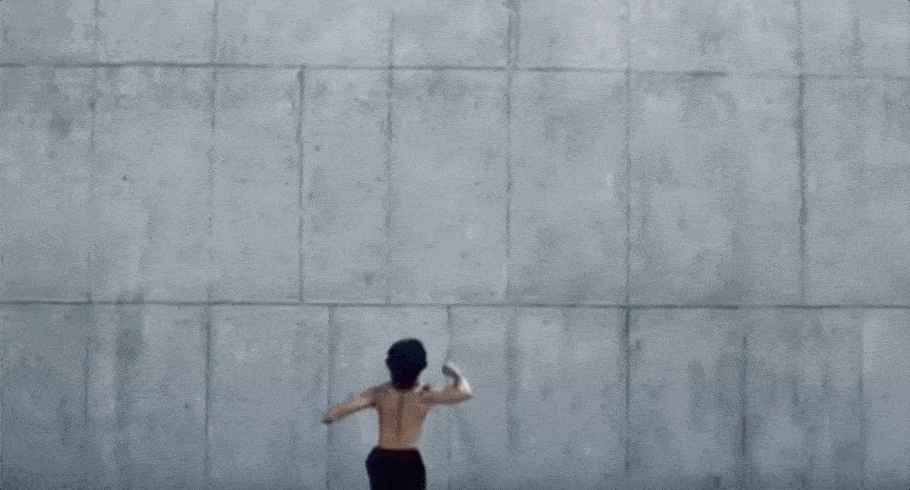Over the past decade, design has made leaps & bounds of progress. Design led companies are popping up everyday with user experience at their heart, disrupting whole industries & transforming into gigantic, powerhouse organisations. Apple and AirBnb are excellent examples of companies that owe much of their success to their design-savvy leadership and keen sense of customer experience.
The results are in, and they are staggering:

- Design-driven companies consistently outperform the S&P by 228%.
(Source: Design Management Institute) - 1.5x greater market share in design led organisations (Source: Adobe)
Still not convinced? Read more of the compelling research by McKinsey & InVision that digs deeper into the business impact of design & UX.
The results speak for themselves, but many organisations are still struggling (or reluctant) to adopt a more design-led, or customer-centric approach.
The winding road to design maturity
If you’re on the road to becoming design driven, it helps to take stock of where your organisation is up to in its’ journey. There’s a few fantastic maturity models that can help you to benchmark where your organisation currently stacks up, and how you can work to get to the next level.
5 Stages of UX Maturity
A popular and exquisitely actionable method to measuring your organisations’ UX maturity is a model developed by Scott Plewes & Jennifer Fraser.

Where you are positioned in the 5 stages is measured using 6 key indicators:
Timing of UX
Does UX only get involved when dev starts? Or is UX also instrumental in helping to shape what we build, rather than just how we build it?
Leadership & Culture
How highly does the organisation value design & UX ? Is UX understood & represented at the executive levels of the business?
Availability of Resources
Does the business have a well-established UX team, capable of servicing the UX needs across the whole organisation?
Techniques
Is the business using appropriate techniques, methods & deliverables to engage with users and adequately capture needs?
Connected Processes
How integrated are UX processes with other business processes?
Application of Design Thinking
Are design principles being used across the organisation (even beyond the UX team) to drive a consistent and meaningful customer experience?
The beauty of this model is that it doesn’t give a static rating to your whole company. Instead it allows you to dig deeper and understand where your strengths and weaknesses are. For 4 of the 6 key indicators, you might be trailblazing, while for the other 2 you may find your organisation lagging behind.
All this begs the question: How do we start to shift our teams and wider organisations towards a more design-led approach? How do we make it to that next level of the maturity ladder?
The difficult news is, unless the higher levels of your organisation just wake up one day and decide that UX is worth investing in, it’s really up to you, the UXer, to work tirelessly to convince them.
At the risk of sounding sappy and cliche, it all starts with how we work on the ground in our organisations.
Break down the design silo
If you’re aiming to push your team towards a new way of working, and help your organisation to understand the value of design, you’re gonna have to close your MacBook and start talking to the humans around you.

Resist the urge to sit at your desk all day, plotting an elaborate redesign all by yourself, and start to socialise your design process with anyone who shows an interest.
Your legs are your most effective design tool. Get out there and connect with people.
Many design challenges are organisational challenges, and solving these tends to be more about connecting with people rather than shifting pixels around in Sketch.
Winning hearts and minds
Being a designer is like having a super power. You have the amazing ability to let others gaze into a crystal ball about what the future could look like. Inherent in this ability is an opportunity to help an organisation rally around a common vision.
To articulate your vision with clarity and maximise your effectiveness, you’ll need to win over all different kinds of personality types. If you’re going to persuasively sell your vision and concepts, you’ll have to round out your presentations to win both hearts and minds.
To win hearts:
Weave vivid stories to evoke emotion & make people crave your vision. Winning hearts is largely about empathising with your audience, understanding their perspectives, and working to craft the best possible story that will help them to align with your thinking.
To win minds:
Appeal to the analyst in people by wowing with data, hard facts & brutal pragmatism. Winning minds comes down to doing your research, and having numbers to back up your suggested course of action. Which metrics are the most important to your audience? How will this project help to further their goals & KPIs in these areas?
”If you want to build a ship, don’t drum up the people to gather wood, divide the work, and give orders. Instead, teach them to yearn for the endless immensity of the sea. — Antoine de Saint-Exupery
Don’t be a bottleneck (or worse, a blocker)
Sometimes engineers & BA’s can become resistant to involving the UX designers in their team. This can stem from an unhealthy perception that any time UX gets involved, progress stalls. At some point in the past, this team might have been ‘burned’ by a designer.
You’ll have to work harder, and smarter to change this perception, and forge a new identity as the development team’s ultimate enabler, rather than a blocker.

Become an enabler
Fight tenaciously to clear any design-related blockers (and even non-design related ones too if you can), and make sure to send the message that you’re invested in speedy, quality outcomes.
Flag potential blockages as early as possible
Sometimes it doesn’t matter how quickly you try to clear the roadblocks; the reality is, you’re just overburdened. This conundrum is common in scrum teams where there are 8+ engineers & a solo designer to support their workflow. Make sure you flag to the team that you’re snowed under, and work with them to set & manage expectations so they know when you’re likely to deliver on the items of work they are waiting on.
Step outside the cycle
If you’re in the vicious cycle of feeding an endless stream of development sprints, it can feel difficult to even keep up, let alone get ahead of the curve. You’ll be able to serve your team, and your organisational goals better if you start to contribute more to what you’re building rather than just how you’re building it.
This doesn’t mean you can set up shop earlier in the product development process and stay there. To ensure the team is delivering a smooth and cohesive experience, you’ll still need a design presence supporting the sprint. But where possible, ensure there’s a design presence in the planning process, as well as the delivery process.
Product development is at its’ best when design can work across the whole spectrum of the process, from capturing high level user needs, helping the business to shape priorities, scoping features, validating concepts, working with engineers to implement, and testing the outcomes of the delivery.
Behave like a business thinker, not a tortured artist
Sometimes designers aren’t taken seriously in our organisations because we deal with the ‘fluffy stuff’. As champions for the customer, and advocates of empathy, we can often be seen as touchy-feely or overly emotional.
It’s hard to get upper management to respect your ideas & initiatives when they think that you don’t understand their world.

The irony is that we’ve fought so hard for a ‘seat at the table’, that a lot of us never thought to plan for what we’d do if we ever sat there.
Communicate with purpose & intention
Make an effort at every turn to communicate that you’re not an artist. You’re making pragmatic, intentional design decisions that precisely balance user needs, technical constraints & business objectives.
Read more business books than design books
Learn the language of business. Practice putting design problems into a business context to help communicate to upper management. Robust business acumen is an admirable trait in a design thinker, and an incredibly powerful addition to a C-Suite team.
Proof is in the pudding
Wherever possible, tie design decisions to financial outcomes, and key business objectives. If your last project was really successful, make sure you document how UX & customer involvement made a positive contribution to the improvement.
Be pragmatic, over being precious
The pedantic, perfection driven ways of design folk. We tend fuss over seemingly tiny details, and it can drive the engineering team utterly mad. The truth is, we’re often more effective at driving change if our product teams aren’t exhausted from pixel pushing the design implementation.
The main problem with a meticulous approach to UI execution is that it takes a lot longer to backtrack if we weren’t building something customers wanted to start with.
It’s better to build the right thing adequately, rather than building the wrong thing perfectly.
This isn’t to say that quality isn’t important, and I certainly don’t advocate moving fast or breaking things. Balancing quality with output is the key here, and making sure to maintain momentum rather than getting trapped in the weeds.
”Be stubborn on the vision, and flexible on the details. Jeff Bezos
Keep your quality bar high, but prioritise progress over perfection.
Put design on the radar
Educate and evangelise. Build relationships far and wide. Try to connect with everyone from the receptionist to the CEO. Make sure everyone you meet knows what UX is, and why it’s important to invest in. If you work in a smaller company, this is a cakewalk … Everybody’s role probably has at least a smidge of overlap, and you eat lunch at the same table every day.
In larger organisations, there’ll be entire departments that genuinely don’t understand what their UX team is all about. Work on breaking any pre-existing stigmas, that designers are just commercial artists. Rather than hiding your process away in a war room, or in Sketch files, put it in front of as many people as you can, and help them to understand that you are problem solvers, not pixel pushers.
Work tirelessly to forge an advocacy for design at all levels of the organisation. This will make all the political aspects of design a whole lot easier in the long run. Getting buy-in for future initiatives, stakeholder interactions, and delivering great work all become much easier when everyone knows what UX is all about, and how it works to support organisational goals.
Lose the battle to win the war

Design isn’t about winning all the time. In fact, I’d say it’s never about winning. Design is mostly about compromise and being adaptable to new and unusual circumstances. Sometimes a design detail isn’t possible because we can’t manipulate the data in that way. Other times, our concepts just can’t be rolled out in a timely fashion, and we’ll have to take little baby steps to eventually get to the end vision.
Play the long game
Rather than pushing for instant perfection, settle in for the long haul. If you push the team too hard in the beginning, you might make more enemies than friends, and this might mean that you’ll never get to roll out your final vision.
Be ready to pivot & improvise
Improvisation is always better than bastardisation. If you make a perfect design and chuck it over the fence, it’s likely to be torn apart and reshaped when you’re not there to defend it and give the design decisions context. Try to shepherd your design from conception to delivery, and stay on hand to pivot and help guide it back into place if unexpected circumstances arise.
Turn your whole team into customer evangelists
In many organisations, the UX or CX team are expected to be the voice of the customer. The user advocates. The sole custodians of delivering products that meet (and hopefully exceed) user expectations. Product teams tend to deliver the best experience when everyone is stubbornly fighting for the customer. One of the best changes you can make to help an organisation move to the next level of UX maturity, is to encourage everyone to embrace customer-centricity.
Become a connector
Help your team connect with customers so they can start to understand a new perspective. Facilitate more testing sessions and invite your engineering team along. Include customer representatives in a Design Sprint. Take your product team to events and conferences where their work is being showcased to a wide range of target users. The remarkable thing is, once the team has been exposed to a few of these humans, you’ll see a natural empathy & enthusiasm for bug fixes, and new enhancements emerge.
Wrapping up
It’s a rough and winding path. And some organisations will need a bigger push than others. Even if you can’t make it to that next level of UX maturity, there’s always things you can do that impact the team around you, helping to plant the seeds for a design driven future.
Remember to:
- Benchmark your organisations’ UX maturity
- Break down the design silo
- Become an enabler, instead of a blocker
- Win hearts & minds
- Step outside the sprint cycle
- Behave like a business thinker, not a tortured artist
- Be pragmatic, over being precious
- Put design on the radar
- Lose the battle to win the war
- Turn your whole team into customer evangelists


